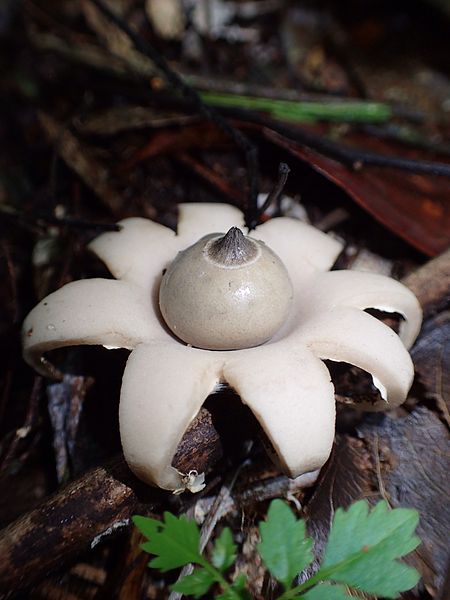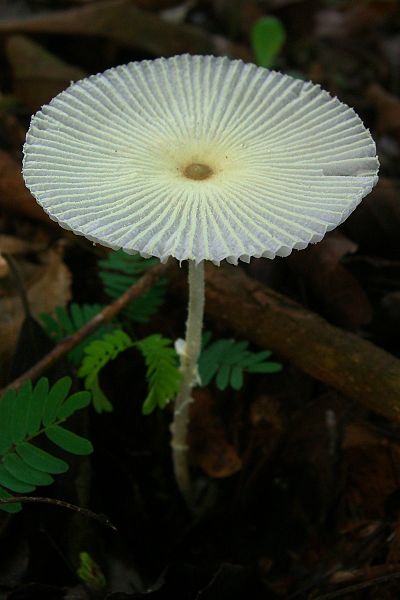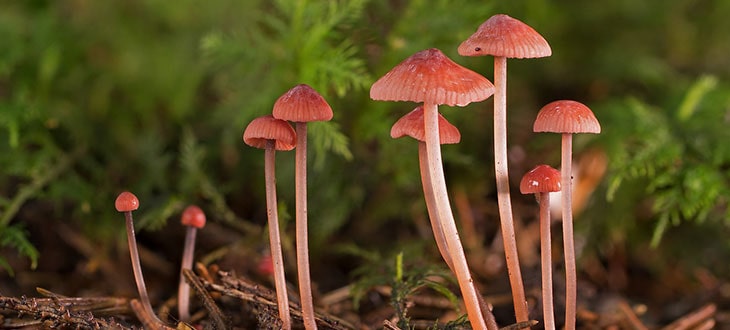5 Mushrooms That Look Like Flowers
Are you looking for mushrooms that look like flowers? Here are 5 species of fungi that produce fruiting bodies that mimic flowers.
There are over 100,000 known species of fungi. These organisms impress not only by their adaptability but also through their diversity in terms of the shapes and colors of their fruiting bodies (what we call mushrooms).
Not all fungi produce fruiting bodies that have the classic appearance of mushrooms. Some of them have unique and bizarre unearthly looks, while others look similar to flowers, corals, eggs, brains, cauliflower, etc.
In this article, we are going to list a few of the species of mushrooms that look like flowers.
1. Geastrum
Geastrum is a genus of mushrooms in the family Geastraceae. They are also commonly known as “earthstars.”
The fruiting body of this mushroom first develops underground, then it emerges at the surface of the ground as a small egg with a pointed beak.
Later, as it matures, the external layer splits into multiple segments and extends outwards and downwards, uncovering the spherical central spore sac.
When fully opened, the mushroom gets the look of a star or flower with a central flattened bulb (the spore-sac) and the segments look like petals.

Depending on the species, they may slightly vary in aspect and color.
The mushrooms in the genus Geastrum are frequently found in coniferous, deciduous, and mixed forests, but also in parks, gardens, and humus-rich lands.
They are saprobic, helping to decompose dead wood and other plants.
Geastrum mushrooms are generally considered non-poisonous but regarded as non-edible due to their fibrous texture and unpleasant taste.
2. Chorioactis Geaster
Chorioactis geaster, the Texas star or devil’s cigar as it is commonly known, is the only mushroom in the genus Chorioactis.
It is an extremely rare mushroom as it can only be found in several locations around Texas and Japan. It also has a very unusual shape for a mushroom.
The fruiting body of this fungus has a hollow dark-brown body that is connected to a stem which is usually found partially or fully buried in the ground. When young, this looks very similar to a cigar.
At maturity, the body opens up and divides into 4 to 7 segments that curve downward, getting the aspect of a flower or star.
The entire external surface of the mushroom is covered by a dense layer of soft, brown, velvety hairs.
It is believed to be a saprobic mushroom (feeds on dead organic matter), but as it is very rare, many things are still unclear about it.
3. Myriostoma
Myriostoma is a genus of fungi with a wide distribution and includes about six different species of rare mushrooms.
These mushrooms are most of the time encountered in various habitats, including deciduous and mixed forests, along hedges, grassy road banks, and grazed grasslands.
They are saprotrophic and acquire nutrients from decomposing organic matter.
Myriostoma mushrooms have a quite distinct look from most species of mushrooms due to their star or flower-like look when mature. They resemble earthstar mushrooms (Geastrum), but there are a few differences between these two.

The fruit bodies of Myriostoma begin their development under the substrate, and as they mature, the external layer splits open typically into 7 to 14 segments that fold backward. This pushes the mushroom above the substrate.
The segments are many times asymmetrical, with tips that sometimes roll back inward.
In the center of the fruiting body, there is a globose grey-brownish spore sac, supported by a clump of short columns shaped like flattened spheres.
4. Leucocoprinus Fragilissimus
Leucocoprinus fragilissimus is a mushroom in the family Agaricaceae and is found on nearly all continents. It is commonly known as “the fragile dapperling.”
As its common name suggests, this mushroom is very tiny and fragile and at maturity, it may be mistaken for a small species of flower at the first sight.

It is formed by a tiny pale greenish-yellow cap with a darker center which is initially convex, then expanding to almost flat when maturing and getting the look that resembles a flower head.
The cap is supported by a fragile stem with a smooth surface and also of a pale yellow color.
Leucocoprinus fragilissimus grows in forested areas and feeds on organic matter from dead plants.
5. Marasmius
Marasmius is a genus of about 500 species of mushrooms in the family Marasmiaceae.
Most members of this genus are tiny, unimpressive brown mushrooms, but a few species have a look close to flowers due to their vivid colors. Two of these species are Marasmius haematocephalus and Marasmius tageticolor.

Both of these are tiny and fragile and have a conical cap with scalloped edges and ribbed margins. On the underside of the cap, they have free, widely spaced gills.
The cap is supported by a thin stipe which may vary in color depending on the species.
The upper surface of the cap of Marasmius haematocephalus is usually entirely pink or purple and the one of Marasmius tageticolor has stripes of crimson and white.
Final Word
The world of mushrooms is fascinating due to the multitude of shapes and colors.
In this article, we have included several known species of mushrooms that resemble flowers either in their shape or in their vivid color.
Although most of the species we have discussed are quite rare, the next time you see a flower in the grass, make sure it is really a flower and not a mushroom.


